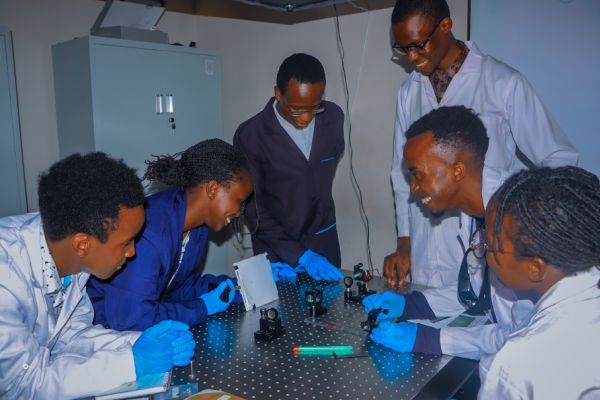A regular column by Daniel Renner
About the Column
This is a new regular column that will explore business aspects of technology-oriented companies and in particular, the demanding business aspects of photonics startups. The column will touch on topics such as financing, business plans, product development methodology, program management, hiring and retention, sales methodology and risk management. That is to say, we will include all the pains and successes of living the photonics startup life.
The column will be written sometimes by myself and sometimes by invited participants, so that we can share multiple points-of-view from a full spectrum of individuals that have something to say about a particular topic. At the same time, the expectation is that this should turn into a dialog with you, the reader. We welcome questions, other opinions and suggestions for specific topics to be addressed in the future.
The intention is that this column will turn into a useful source of business-related information for those who seek to start, join, improve the operation, fund, acquire or sell a photonic startup. A fascinating area that I have been one of those lucky to enjoy as a way of living for a long time.
A Bit About Me

I grew up in the wilderness of Chilean Patagonia, a fact that is one of the origins of my quest for adventure and for exploring new areas. In my early twenties, I decided to leave the Patagonian
open spaces for high-tech open fields. I went to the University of Cambridge in England to do a Ph.D. in Opto-Electronics, a brand new area at the time. Now, decades later, I have lived through the whole range of experiences that relate to the development, manufacturing and commercialization of complex photonic devices and systems used in communication, sensor and industrial applications. My experience spans both the technical and the commercialization aspects of photonic products, with activities within many aspects, including technology and product development, identification of new business areas, introduction of new products, marketing and sales. This experience has included both large and small companies, which gives me a reasonable vantage point to comment on the ups and downs of life in a photonics startup.
I am currently Chief Business Development Officer at Freedom Photonics, Santa Barbara, CA, where I am responsible for the identification of new business areas, the definition of new products and the successful introduction of these products into the market. I am looking forward to the regular conversation to be carried out through this column!
A Background on ‘Risk’ to Begin the Conversation: What is Risk?
From The Oxford Encyclopedic English Dictionary, the word ‘Risk’ is defined as “a chance or possibility of danger, loss, injury, or adverse consequences”. On the other hand, the same dictionary defines the word ‘Opportunity’ as “a good chance, a favorable occasion”. Quite the opposite terms.
Bertrand Russell Perspective
In practice the two terms are not the opposite, in fact they are inseparable! As we proceed through life we normally do not take Opportunities alone or Risks alone, we take Opportunity/Risk dualities, which eventually, over time, as life proceeds, become a fulfilled Opportunity or Risk. I have not yet found a single word that describes well this Opportunity/Risk duality, for now we will stick to the word ‘Adventure’ to describe it. My inspiration was a saying from Bertrand Russell: “A life without adventure is likely to be unsatisfying, but a life in which adventure is allowed to take whatever form it will, is likely to be short”.
Asking for help from the dictionary again, one of the definitions of Adventure is “to incur risk”. I suggest that we expand the dictionary’s definition a bit where Adventure becomes “to incur risk/opportunity.” Normally, people in business would not undertake risk without opportunity, needless to say. So, you now know how to interpret the word Adventure when you see it further down, along this writing.
Hellen Keller Perspective
It is interesting to point out that life itself is an Adventure, touching on the most profound aspects of living, requiring decisions for questions that appear constantly, as we go along. We have no choice but to live this Adventure and, in my opinion, the bolder the adventure, the greater the potential for reward and satisfaction. As Hellen Keller once said: “Security is mostly a superstition. It does not exist in nature, nor does humankind as a whole experience it. Avoiding danger is no safer in the long run than outright exposure. Life is either a daring adventure, or nothing”.
Sir Winston Churchill Perspective
Thus, it is important to learn how to manage the Adventure. Life requires planning to reach a balance between opportunity and risk that maximizes the chances for the Adventure outcome to end up on the opportunity side. This specific balance will depend naturally on you or your planning group. There are no single answers for the Adventure plan, it will depend on your personality and on the environment that surrounds you. The plan can choose to minimize the risks you face, but you cannot avoid risks completely. Along with death and taxes, risk is one of the certainties of life. But, do you really want to minimize risk? That might not be the right strategy. Your plan should produce the right balance between risk and opportunity, not necessarily the minimum risk or the maximum opportunity. As Winston Churchill once famously said: “You have to run risks. There are no certainties in war. There is a precipice on either side of you—a precipice of caution and a precipice of over-daring”. This is your planning goal, to find a path in between the precipices, the management of the Adventure, whether it relates to your whole life or that part of it that is how to succeed in a photonic startup.
Management of the Adventure: Warren Buffet Perspective
Risk can be categorized in many ways. The following examples are ones that I find useful:
1) Risks introduced by mistakes – These are incorrect, inappropriate or unauthorized actions, such as taking the wrong exit on the highway, exposing the photoresist in a wafer for too long or equipment breaking down due to incorrect maintenance.
2) Risks that are out of your control – These are natural, political or economic disasters, such as earthquake, fire and floods in California, the factory of a supplier burns down or there is an economic recession.
The above categories are all just bad luck!
There is a third type of risk, which is not the result of just bad luck. This is a category of risk that you introduce on purpose into your life: 3) Risks that you introduce voluntarily or planned risks.
This risk is the product of incomplete information to reach your objective. Or, as Warren Buffett said: “Risk comes from not knowing what you are doing”. He also said: “In the business world, the rear view mirror is always clearer than the windshield”. In business, information is always incomplete, which is a source of risk. Managing this type of risk is based essentially in managing access to the information that you need to succeed. A few words regarding the first two categories of risk, which are the product of the odds working against you. There is mitigating action that you can take, such as:
- Insurance
- Diversify markets, operational bases, technologies, etc. Diversify!
- Monitor economic conditions
- Monitor the competition
- Well articulated company mission/values/culture
- Strong operating procedures in place
- Pay attention to detail and do not get distracted The third category of risks, those introduced voluntarily through your plan are the most interesting to study and understand. As mentioned, they originate from the fact that you do not have full information to reach the desired objective. And you never will!
Steve Jobs Perspective
The core risk mitigation action in this case, of course, is to gain as much of the information as possible that will allow you to realize the Adventure that you are pursuing. Gaining this information requires time and resources. If we had infinite time and/or resources there would be no risk in life. Thus, using limited time and resources effectively to learn as much and as fast as you can is the key to understanding and implementing risk management. As Steven Jobs said: “It’s really clear that the most precious resource we all have is time”.
According to the Small Business Administration (SBA), 30% of new businesses fail in the first two years, 50% of new businesses fail in the first 5 years and 70% of new businesses fail in the first 10 years. Statistics for new high-tech businesses show even lower rates of success, only one in ten new high-tech businesses succeed. Most new businesses have Adventure plans that lead to short lives!
Mike Tyson and Dwight D Eisenhower Perspectives
Thus, definition of the Adventure plan with strong consideration on how to gain information rapidly is a must! Having a plan is a must! The plan has to show that the objective can be realized with an appropriate level of risk. The plan can be “fuzzy” in certain areas, the near-term is always clearer than the longer term and certain aspects of the Adventure are always clearer than others at the beginning. The plan has to be flexible and dynamic, be prepared to change the plan often. As Mike Tyson said: “Everyone has a plan: until they get punched in the face.” And, as Dwight D. Eisenhower said: “Plans are worthless. Planning is essential”.
The plan has to address both Technical and Market risks:
- Technical risk – Probability of failing to meet the performance, cost or schedule targets;
- Market risk – Risk of selecting wrong performance, cost or
schedule targets for the intended customers. The technical and market risks should we worked concurrently as the plan is defined. A few personal opinions on Market risk evaluation: - Understand customer needs – Customers cannot always define what they want
- Understand customer commitment to development project – This can change quickly
- Understand market window and size – Market research is very subjective
Market risk evaluation is very imprecise, more so than technical risk evaluation, which already is a difficult task. Market research can only be taken as an indicator.
Henry Ford Perspective
What other people have said about market research:
- “If I had asked my customers what they wanted, they would have said a faster horse” – Henry Ford
- “It’s really hard to design products by focus groups. A lot of times, people don’t know what they want until you show it to them” – Steve Jobs
Some good ideas to plan for the effective use of resources and time:
- Use modeling and define key experiments as early as possible
- Build prototypes as early as possible
- Perform risk analysis – Evaluate risk probability and magnitude
- Define risk mitigation action – Can we reduce probability and magnitude?
Hedy Lamarr Perspective
These are all topics that should and will be discussed at length in future columns. This is only the beginning. So, be bold, have no fear, gain knowledge fast and the opportunity is very likely to materialize out of your photonic startup Adventure. Besides, what do you have to lose? As said by Hedy Lamarr, the actor and inventor: “I win because I learned years ago that scared money always loses. I never care, so I win”. If you have any comments for Daniel Renner you can contact him at IPSNEWSLETTER@IEEE.ORG





